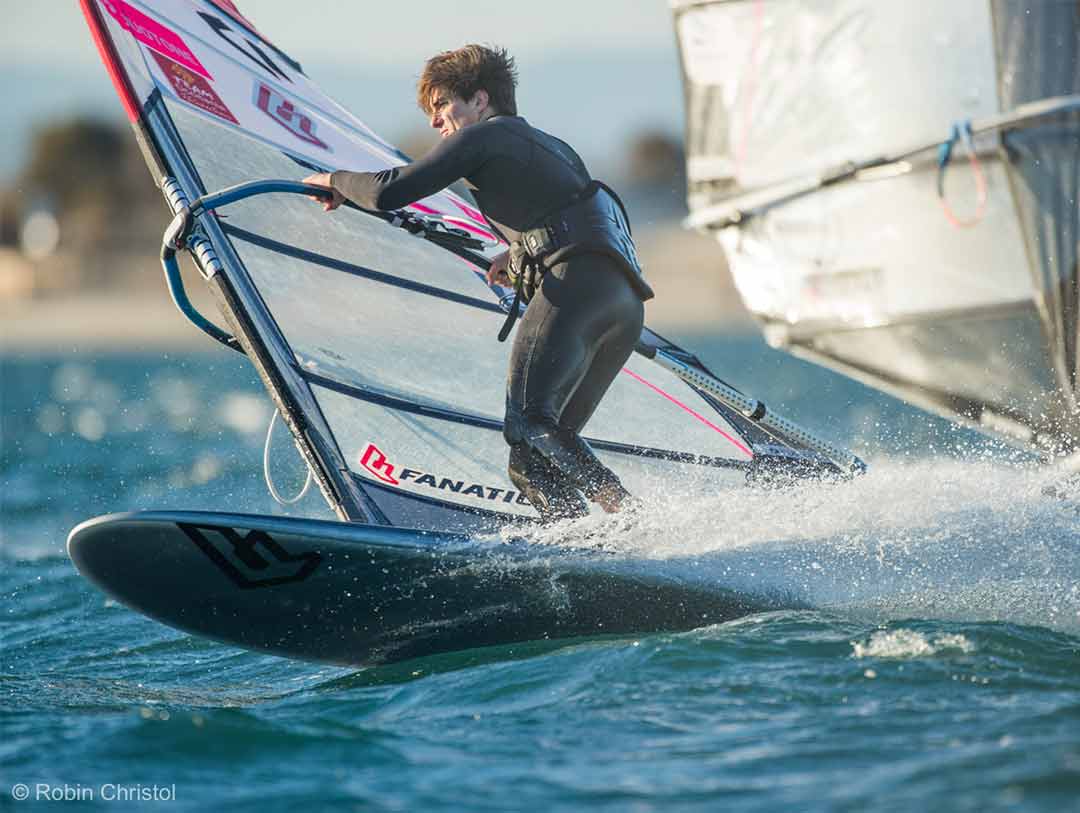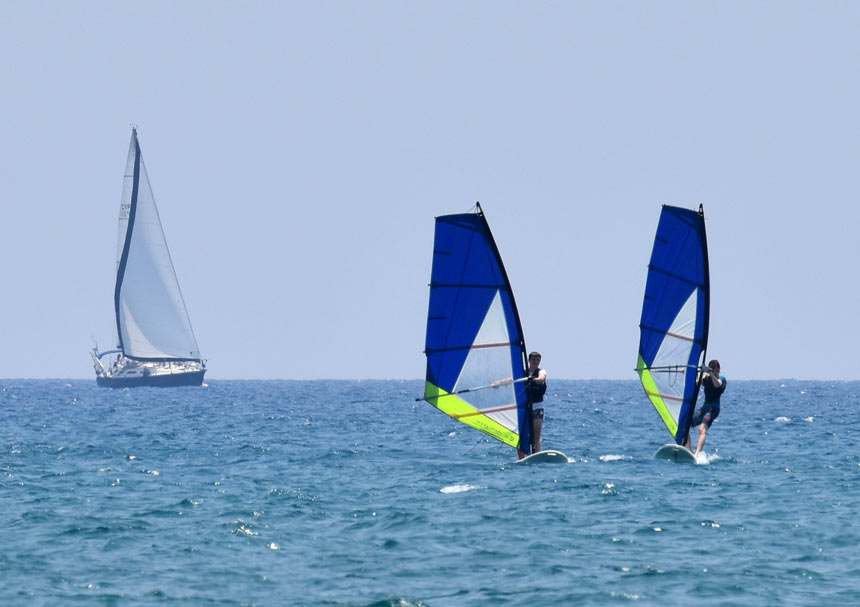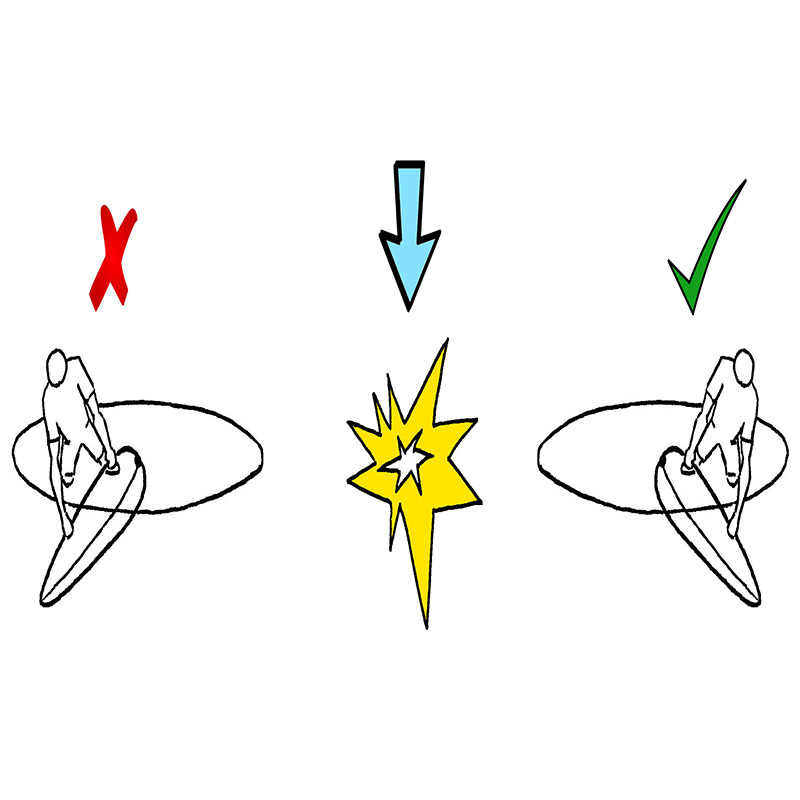



Just like there are rules on the road, there are rules on the water too. And there’s one simple reason these are in place: Safety!
Windsurfing is a safe sport and is guided by several sailing rules. Once you’ve learnt to windsurf it’s vital that you learn these rules in order to avoid collisions, feel safer and have more fun on the water!
SAILING FROM THE OPPOSITE DIRECTION

Rule: The sailor on ‘Starboard Tack’ has right of way over sailor on ‘Port Tack’.
If two windsurfers are sailing towards each other from the opposite direction, then the port side windsurfer must give way to starboard. Starboard tack is when your right hand is closer to the mast and port is when your left hand is closer to the mast. So the starboard windsurfer with right of way has to maintain his direction and speed, while the port sailor who has no right of way has to change direction to avoid collision.

SAILING ON THE SAME DIRECTION

If two windsurfers are sailing in the same direction, a leeward windsurfer has right of way over the windward windsurfer. This means that the upwind sailor must change direction. And the reason is simple, the leeward windsurfer can not see who is behind him. (leeward= the one who is sheltered from the wind)
If in any case, they don't give you the way, then the last minute you should change direction carefully.
If another windsurfer looks like he/she is struggling to keep control and/or learning, be kind and give them a lot of space and right of way.

Motor boats - jet skis, fishing boats, speed boats, runabout - have to make way for windsurfers, surfers and wave riders. In this case, the weakest ones have right of way, as they can't move or change direction rapidly.
Commuter transportation - ferries, liner ships, pleasure water crafts, maritime police boats - has right of way over windsurfers, surfers and wave riders.
Swimmers area - Windsurfing is always prohibited in the swimmer's area.
Distance from other windsurfers - Try to keep a distance of at least 3 meters from other windsurfers. If you are sailing closer, and on the leeward side while someone is on the windward side and catapults, their mast will hit you.
WINDSURFING GLOSSARY

Across Wind - at 90° to the wind direction;
Apparent Wind - combination of true wind and induced wind; Battens - stiff, flexible rods providing strength and shape to a sail;
Beach Start - a technique for start sailing away in low water levels, close to the beach;
Beam Reach - a direction approximately 90° away from the direction of the wind;
Bear Away - to steer the board away from where the wind is coming from; Blasting - moving quickly across the water;
Boom - the "handlebars" of a windsurfer;
Boom Head - the part of the boom where the mast is attached; Broad Reach - a direction approximately 135° away from the direction of the wind;Carve Gybe - high wind planing gybe;
Centre of Effort - a central point on the sail from where the drive comes from
Centreline - imaginary line going through the centre of the board from nose to tail;
Clew - rear (lower) corner of sail, which attaches to the end of the boom;
Close Hauled - a direction approximately 45° away from the direction of the wind;
Daggerboard - large flat retractable plate providing the board with sideways resistance;
Downhaul - a rope used to attach the tack of the sail to the mast foot;
Downwind - in a position further away from the wind then you are;
Duck Gybe - carve gybe achieved by "ducking" the sail;
Eye of the Wind - the exact direction of the true wind, that is twelve o'clock;
Fin - curved foil attached to underside and tail of board providing directional stability;
Gust - a short and temporary blast of wind;
Gybe - a turn that takes the nose of the board away from the wind;
Harness Lines - lines linking harness to rig;
Harness - equipment to attach the body to the rig;
Head Upwind - to steer the board closer to where the wind is coming from;
Head downwind - to steer the board down with the wind
Hooking In - attaching harness to harness lines;
Leeward - a place or side of a board/craft that is away or sheltered from the wind;
Mast Extension - an adjustable version of a mast foot;
No-Go Zone - an area approximately 45° either side of the wind direction into which it is not possible to sail or windsurf;
















